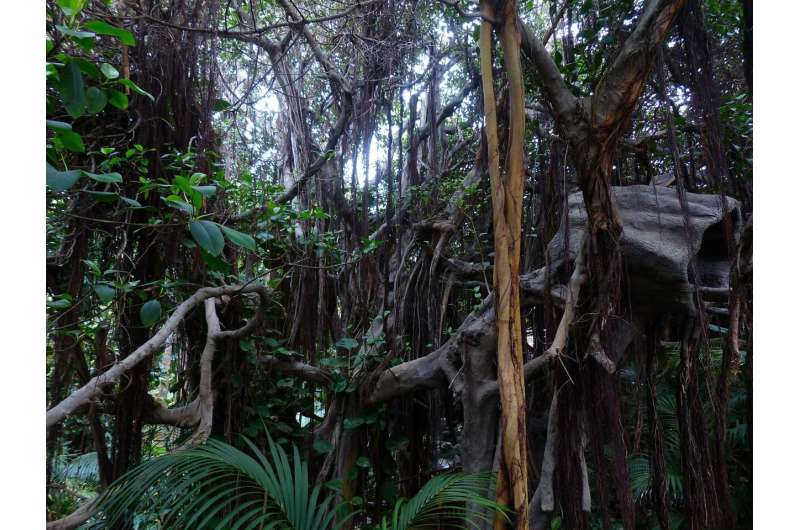Spatial autocorrelation: The most important factor shaping liana distribution in subtropical forest

Lianas are an important component of subtropical forests. Studies of subtropical lianas have made strides in identifying their composition and diversity. However, the distribution patterns of subtropical lianas are still unclear, which hampers the further understanding of the liana community across the world.
In a study published in Biotropica, researchers from the Xishuangbanna Tropical Botanical Garden (XTBG) of the Chinese Academy of Sciences investigated liana spatial distribution patterns and their drivers in the Ailaoshan subtropical forest, a representative of the subtropical evergreen broadleaved forest in South China.
The researchers selected the 12 most abundant liana species in a 20-hectare plot in the Ailaoshan subtropical forest. They tried to explore how liana distribution is shaped by host tree properties, topography and spatial autocorrelation, combining data on topography (convexity, slope, aspect, and elevation) and host trees (density and size) of the plot.
They found that liana distribution in the Ailaoshan forest was spatially aggregated. Spatial autocorrelation explained most of the variation in liana distribution, with the number of host trees and topographic variables having little effect.
At the community level, 4 percent of the variation in liana spatial distribution was explained by host tree properties (tree density and diameter at breast height), 18 percent was explained by topographic variables (convexity, slope, aspect, and elevation), and 43 percent was explained by spatial autocorrelation. A similar trend was found at the species level.
"This is the first study to distinguish the relative contributions of host trees, topography, and spatial autocorrelation on liana distributions in a subtropical evergreen broadleaved forest at high elevation in southwest China," said Prof. Zhang Jiaolin, principal investigator of the study.
The researchers proposed that future studies should combine host trees (height and canopy opening), disturbance, soil nutrient and moisture status, and dispersal traits (seed mass and dispersal distance) for a better understanding of the mechanisms underlying liana spatial distribution.
More information: Xiao‐Long Bai et al, Spatial autocorrelation shapes liana distribution better than topography and host tree properties in a subtropical evergreen broadleaved forest in SW China, Biotropica (2021). DOI: 10.1111/btp.13043
Journal information: Biotropica
Provided by Chinese Academy of Sciences





















